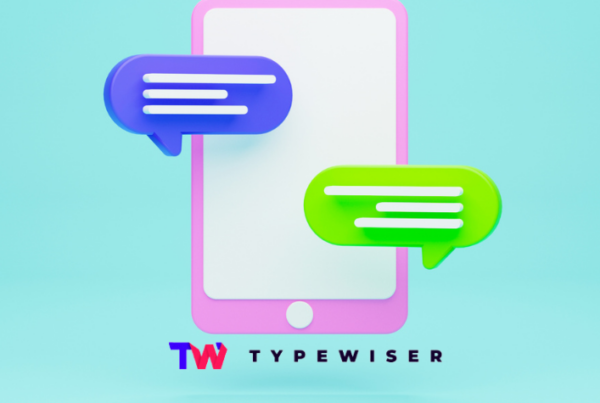The evolution of AI is reshaping the foundations of written communication, introducing a fundamental change in how ideas are crafted and shared. AI documents showcase this transformation, enhancing and streamlining the creation process.
What was once the domain of human creativity has evolved into a collaborative ecosystem where technology and expertise intersect to redefine the essence of document creation.
Lets explore the new dynamic where AI isn’t replacing creativity—it’s amplifying it.
The History of AI Writing
 Back in the day, documents were limited to simple, cookie-cutter templates. Think basic emails or standard reports. They fundamentally lacked the sophistication to handle complex writing tasks.
Back in the day, documents were limited to simple, cookie-cutter templates. Think basic emails or standard reports. They fundamentally lacked the sophistication to handle complex writing tasks.
These primitive tools operated with minimal understanding of language’s contextual nuances, often producing mechanically correct but contextually inappropriate text, making their role in generating AI documents limited and simplistic.
Significant challenges prevented these systems from creating meaningful, nuanced documentation:
Lack of Contextual Understanding: Early AI systems struggled to grasp the broader context of text, resulting in outputs that lacked the subtlety and depth necessary for advanced writing.
Limited Training Data: The datasets used were often too narrow or overly generic, restricting the AI’s ability to adapt to specialized fields or technical content.
Rudimentary Natural Language Processing: The absence of advanced language models meant that early technologies were unable to effectively handle complex syntax or semantics.
As a result, AI functioned mainly as a supplementary tool for automating repetitive tasks. Its inability to generate tailored, high-quality content significantly limited its applications in professional or specialised purposes.
The Technological Revolution
The arrival of advanced Large Language Models (LLMs) like GPT and BERT transformed the relationship between artificial intelligence and human language.
These models, designed with extensive datasets and intricate neural network architectures, showcased a strong grasp of context, enabling them to produce cohesive text and adapt to diverse writing styles with accuracy. This advancement redefined the capabilities of AI in language processing and generation.
Advancements in natural language processing (NLP), machine learning, and computational power have driven these developments in AI:
- Context-Driven Language Models: Modern LLMs use transformer architectures to achieve a deeper understanding of context, enabling AI to interpret meaning accurately and tailor text to user intent.
- Extensive Training Datasets: These models are trained on massive datasets spanning various industries and languages, making them versatile and adaptable for creating AI documents.
- Advanced Machine Learning Techniques: Innovations like few-shot learning and reinforcement learning with human feedback have significantly improved the accuracy and relevance of AI-generated content.
Modern AI Writing Systems
AI-powered writing has taken a technological leap, mastering complex document creation tasks with an advanced level of precision and expertise.
Platforms like Typewiser are leading this progress, seamlessly integrating human insights with cutting-edge technology to redefine the role of AI in writing.
Developed in collaboration with writing experts, Typewiser delivers accurate and relevant content that meets the highest industry standards. By leveraging multiple LLMs, each chosen for its unique strengths, the platform ensures precision, depth, and adaptability.
Whether it’s crafting complex grant proposals or customizing content for diverse audiences, Typewiser raises the bar for automated document creation, providing professional results tailored to the needs of any industry.
Diverse Applications Across Professional Domains
 AI’s capabilities in document generation have expanded significantly, enabling it to address a wide range of professional needs:
AI’s capabilities in document generation have expanded significantly, enabling it to address a wide range of professional needs:
- Grant Proposals: AI simplifies the traditionally time-consuming process of crafting grant proposals by researching, structuring, and drafting compelling documents tailored to specific funding priorities.
- Non-Binding Legal Documents: While binding agreements still require human oversight, AI assists in creating contracts, terms of service, and legal templates by identifying standard clauses and organizing information logically.
- Business Plans and Funding Pitches: AI tools generate comprehensive business plans with financial projections, market analyses, and operational strategies, giving entrepreneurs a strong foundation for investor presentations.
- Technical Manuals and Guides: AI effectively translates complex technical details into clear, user-friendly manuals and guides, simplifying jargon and localizing content for diverse audiences.
- Multilingual Content Creation: AI’s ability to produce localized content in multiple languages ensures precise translations and cultural relevance, empowering businesses to communicate globally with ease.
Technological Foundations and Practical Implications
Modern AI writing tools, built on computational linguistics and machine learning techniques, are changing professional workflows. These systems process large datasets, recognize linguistic patterns, and adapt to specific domains with precision.
Techniques like few-shot learning, reinforcement learning, and multimodal model development expand their potential, enabling professionals to save time on document creation and focus on strategic and creative tasks.
AI ensures consistency by reducing errors and maintaining a uniform tone across documentation. It also makes technical knowledge more accessible by breaking down complex concepts into clear language. These tools help professionals work efficiently and improve productivity.
The Future of AI-Driven Writing
 The evolution of AI-powered writing tools has only just begun. As AI models become increasingly sophisticated and integrated into various industries, we can anticipate even more impressive capabilities, such as a deeper understanding of literary nuances, increased capacity for inference and rational “thought”, and seamless integrations with other productivity software. These advancements will make AI documents significantly more useful in professional settings.
The evolution of AI-powered writing tools has only just begun. As AI models become increasingly sophisticated and integrated into various industries, we can anticipate even more impressive capabilities, such as a deeper understanding of literary nuances, increased capacity for inference and rational “thought”, and seamless integrations with other productivity software. These advancements will make AI documents significantly more useful in professional settings.
To experience the transformative power of AI in writing, explore Typewiser and discover how it can redefine your document creation process. The impossible is now just a draft away.
Create smarter documents effortlessly with AI! Choose from 200+ templates for business plans, reports, and more.
Sign up for Typewiser today and simplify your workflow.



